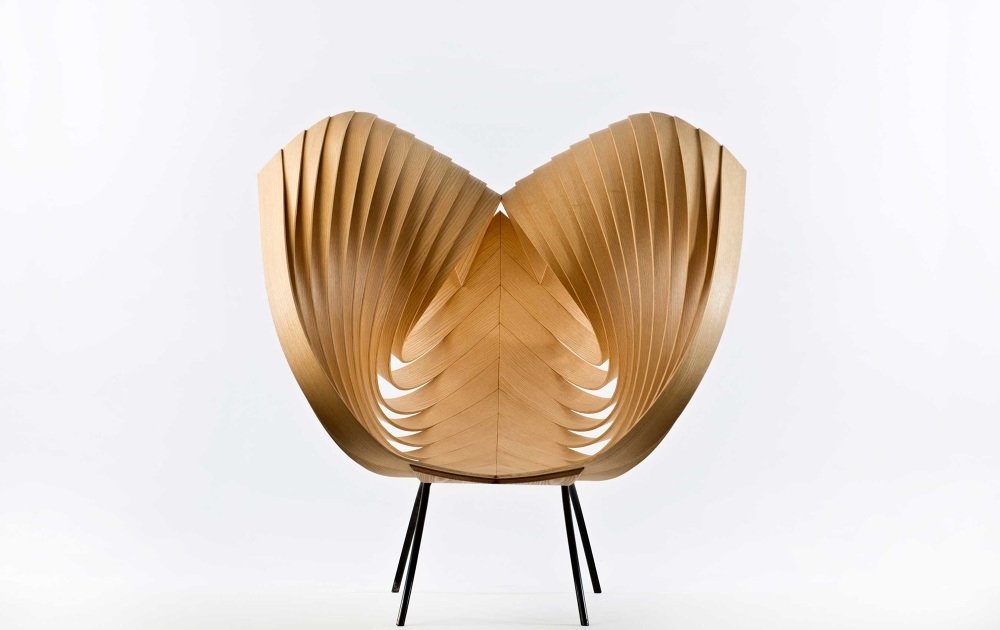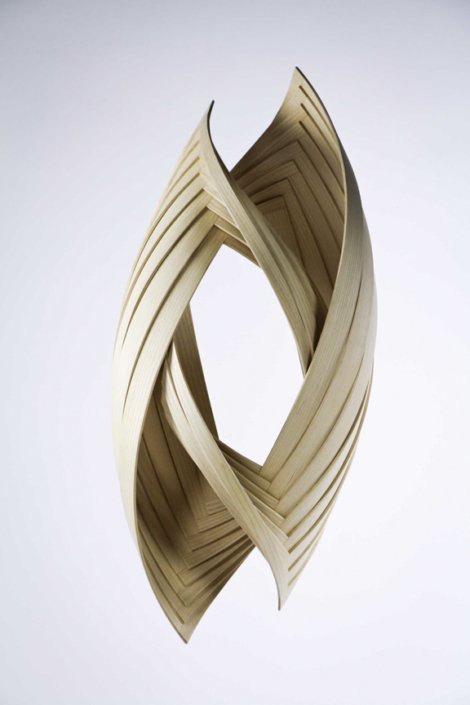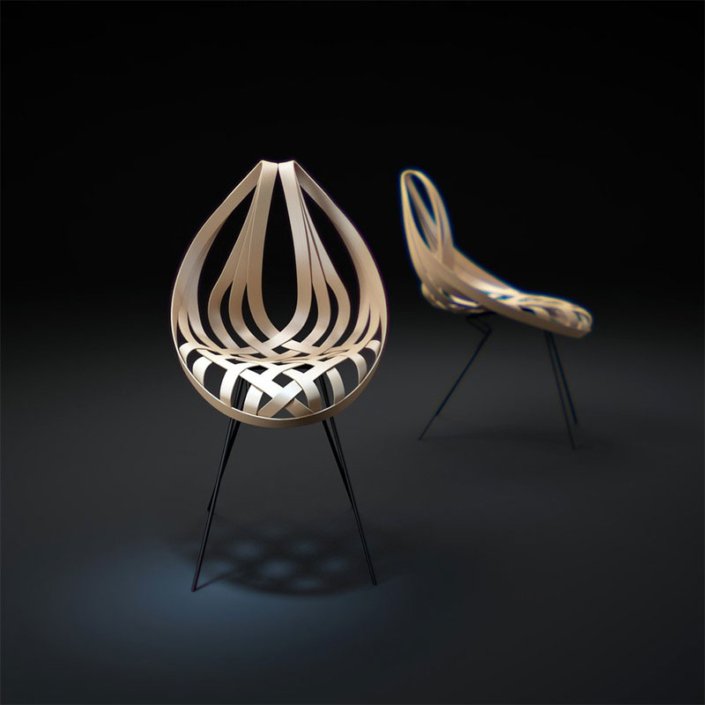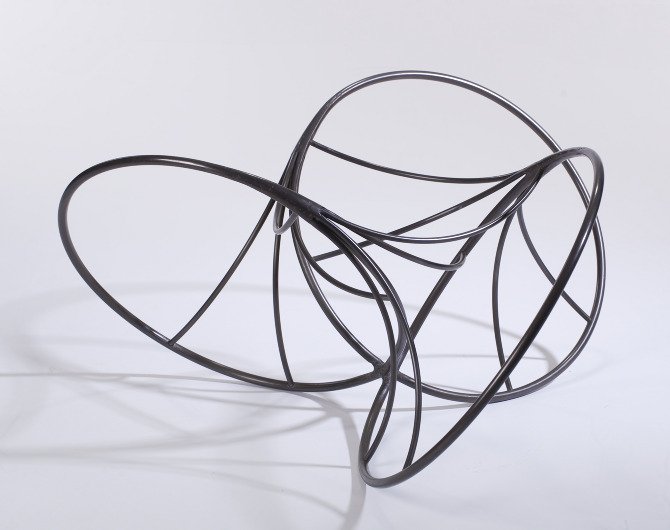Laura Kishimoto Design
“One thing that really excites me about furniture; while nearly everyone has a preconception of what it should be, no one can seem to agree on a definition.”
– Laura Kishimoto
Laura Kishimoto is a Denver-based designer and furniture maker who graduated from the Rhode Island School of Design in 2013. At a very young age, she has established a reputation for innovative and visually arresting work that straddles the fine line between art and functionality. Kishimoto’s pieces are ethereal and delicate with a strong, organic quality.
More than just her work, Laura is a testament to the fact that you don’t need years of industry experience, or a decade as an apprentice to create a successful, thriving business. Still in her early 20s, she has already made a name for herself nationally, and as her list of clients and commissions grows, she is poised to make big waves in the industry.
TARRA sat down with Laura to learn a little more about what drives her design and how being a woman in the furniture industry informs her everyday experience.
Q: Describe the moment you decided to become a furniture/object designer.
Growing up I enjoyed painting and drawing as a hobby. My introduction to working three dimensionally in college was life altering. Instead of focusing on a single composition in a two-dimensional space, every conceivable viewpoint of an object became a new composition. Furniture further complicated the creative challenge because a piece had to exist as a complete object both in the interaction with a human being and as its own entity.
Q: How has being a woman in your industry been challenging?
Both furniture making and design are still very much male dominated fields. However the most annoying character I regularly come up against is the woodworking hobbyist/weekend warrior. It’s frustrating to be patronized by the far less informed and less accomplished amateur.
Q: What have you learned from those specific challenges?
Specifically, I’ve learned to adopt a concussed look that deters even the most determined rambler. But more broadly, I’ve learned to enjoy being the underdog.
Q: What is the one piece of advice you would give to young women who are just getting started?
I want to emphasize that self-doubt and cynicism are never conducive to designing. Sometimes the attitude I have to adopt to see a piece in an objective light or give myself constructive criticism is very similar to these outlooks. The difference is crucial to understand. Doubt and cynicism only leave someone feeling weaker and less focused.
Q: If you were handed any project in the world, what would it be? Who would you like to create something for? Where would it be located? What materials would you use? Would it be a collaboration?
When I graduated from RISD, my Yumi Chair was exhibited at the Dwell On Design: Faculty Selects show. After the show, I found out Nick Offerman—who plays the unflappable Ron Swanson on Parks and Recreation, a personal hero of mine—had been one of the judges! He even commented on my piece in his review of the show. From that moment on, I made it one of my life goals to one day create a chair for him as very large, three-dimensional fanmail.
Q: What is the inspiration behind your most recent project/creation/object?
The most recent project I revisited was my vaulted stool. At the time I was designing the stool, I became very interested in cathedral architecture from Ken Follett’s The Pillars of the Earth novel, and it fascinated me how the shape of a space can evoke such a spectrum of emotions. I was simultaneously taking a class in traditional upholstery techniques, and felt driven to create a piece of furniture which manifested my design aesthetic while showcasing the unique effects achieved by upholstery.
Q: Walk me through your creative process.
When I begin designing, I like to use strips of paper to mock up experimental forms. Paper is a two-dimensional material, and I am entirely uninhibited by any nagging doubts of what is or is not possible with my chosen materials. Once I create a form that feels complete, I then attempt to apply my woodworking knowledge and resources to the design. Often the initial form isn’t physically possible through traditional means, but by reaching out to other designers or industries I sometimes find surprising solutions.
Q: What is the most challenging project you have ever worked on and why?
One of the most challenging projects I’ve worked on was the first piece I made outside of school: the Yumi Chair II. Since I no longer had the support and structure offered by my professors and classmates, I initially felt very isolated and unsure of myself. And because I was designing the piece in “real life” there were real consequences if I made mistakes, fell behind schedule, or had poor craftsmanship.
Q: What aspect of your upbringing/childhood affected your decision to go into furniture design?
Growing up I always enjoyed drawing and painting. As I neared college, I felt the strong need to choose a career path where I could make a lasting contribution to the field. My lifelong passions and aptitude for the arts made design a natural decision.
Q: If you could go back in time and fix a project or object what would it be and what would you do to it?
I am actually doing that right now. When I originally made a lot of the designs that I get the most inquiries for now, I knew relatively little about fine woodworking, craftsmanship, and ergonomics. In the past year I’ve learned so much that I am now embarrassed to let anything leave my shop without refining the design and streamlining the construction process of an object.
Q: What technology in your industry do you totally geek out on?
Since the majority of my work incorporates freeform bent lamination, I am entirely reliant on the technological innovations in glue. Though glue doesn’t sound like an advanced technology, it has progressed rapidly in the past few decades. Originally, woodworkers would use animal based glues that would inevitably fail in the lifetime of the furniture. To compensate, traditional joinery and woodworking techniques were born. Now that glue has advanced to the point that it is stronger than the wood itself, designers can break out of archetypal forms the average person associates with furniture.
Q: How has technology changed the way you work?
Until recently, I incorporated very little technology into my creative process since working directly with a material is so informative to my designs. I like to try to create forms that I could never develop through sketching or theory alone. Since a 3-axis CNC was installed in the shop though, I quickly got used to the luxury of being able to cut out compound curved molds to make my bent lamination forms more reproducible.
Q: What are you most excited about for the future of your business/industry?
One thing that really excites me about furniture; while nearly everyone has a preconception of what it should be, no one can seem to agree on a definition. An increasingly large pool of artists and designers celebrate furniture as their medium, constantly pushing its boundaries in technology, craftsmanship, conceptualization, and functionality.
Q: How do you gauge the success of a project…money? Acclaim? Personal satisfaction?
I primarily gauge the success of a project on whether it looks/feels like a complete object. I try to question and pick apart every aspect of the design until the viewer/user cannot imagine the end result in any other way.
Q: Do you welcome collaboration, or do you like to have all the control?
I tend to be overbearing when I collaborate with other designers since I usually have a very clear idea of what I want the final outcome to be. I am always fascinated though to see another designer’s creative process. This can lead to something of a rabbit hole and I find just as much discretion and skill is required for deciding when to stop as there is for deciding to continue.









